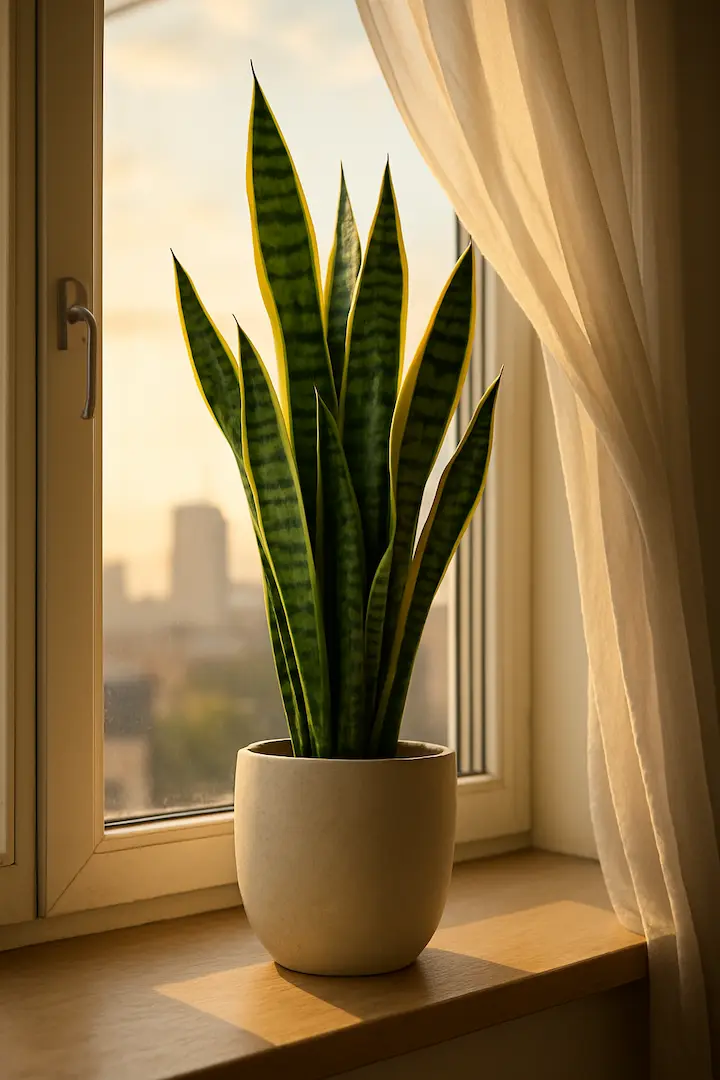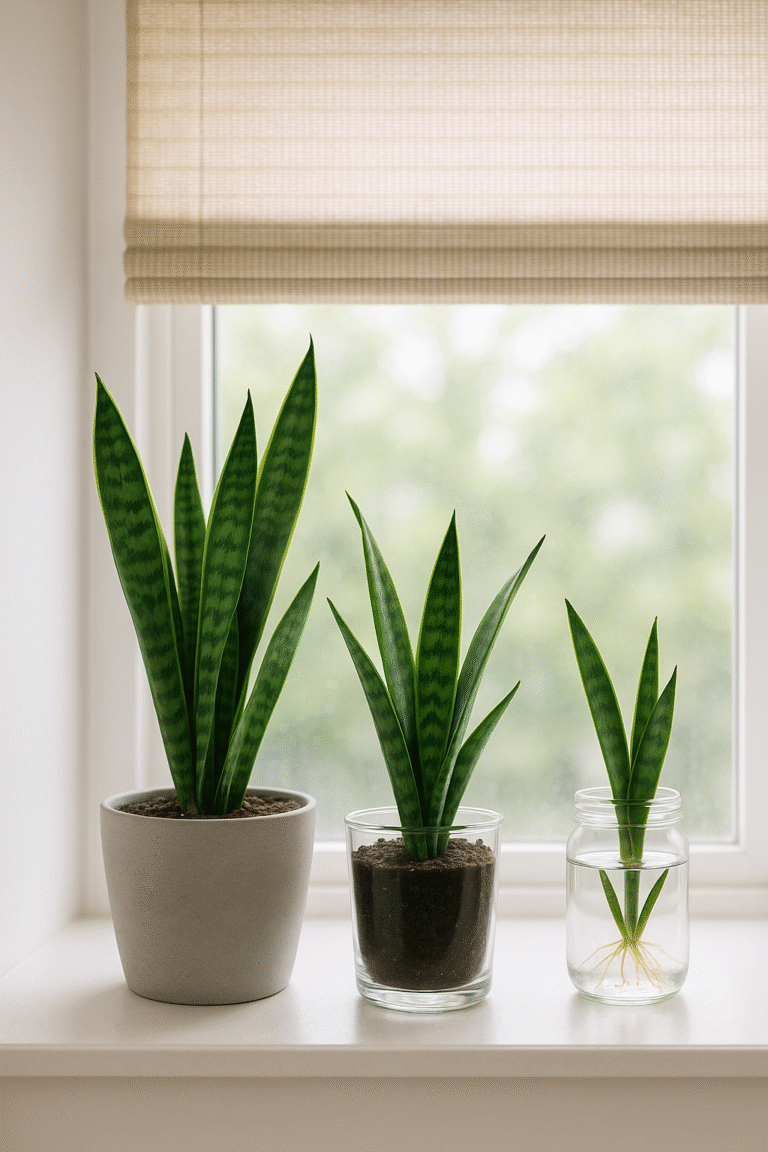Snake Plant Care and Benefits: The Perfect Indoor Plant for Beginners
Are you looking for an indoor plant that’s nearly impossible to kill? The snake plant (Sansevieria or Dracaena trifasciata) might be your perfect match. With its striking upright leaves featuring distinctive patterns, the snake plant has become a staple in modern home décor. But its appeal goes far beyond aesthetics—this resilient houseplant offers numerous benefits while requiring minimal care, making it ideal for both novice and experienced plant parents.
Why Snake Plants Are Perfect for Beginners
Snake plants have earned their reputation as one of the most forgiving houseplants available. They thrive on neglect, making them perfect for busy individuals or those who haven’t quite developed their green thumb yet. These hardy plants can survive weeks without water and adapt to various light conditions, from bright indirect light to shadier spots where other plants would struggle.
Want to expand your snake plant collection?
Learn How to Propagate Snake PlantsBeyond their low maintenance nature, snake plants are powerful air purifiers. NASA’s Clean Air Study found that they remove toxins like formaldehyde, benzene, and trichloroethylene from indoor air. They also release oxygen at night, unlike most plants, making them excellent bedroom companions for improved air quality while you sleep.
Light Requirements for Snake Plants
While snake plants are adaptable to different light conditions, they do have preferences. Ideally, place your snake plant in bright, indirect light for optimal growth. However, they can tolerate low light areas where most plants would perish, making them perfect for dimly lit offices or north-facing windows.
Be cautious about exposing snake plants to direct sunlight for extended periods, especially during hot summer months. Too much direct sun can scorch their leaves, causing brown spots or bleached areas. If you notice your plant leaning toward the light source, rotate it occasionally to maintain even growth.
Watering Your Snake Plant Correctly
The number one rule for snake plant care: it’s better to underwater than overwater. These succulent-like plants store water in their thick leaves and are highly susceptible to root rot when overwatered. Allow the soil to dry out completely between waterings—typically every 2-3 weeks in warmer months and even less frequently during winter.
Looking for tools to help manage your plant care?
Discover AI Tools for Plant EnthusiastsWhen watering, thoroughly soak the soil until water drains from the bottom of the pot, then empty the drainage tray. Never let your snake plant sit in standing water. Signs of overwatering include yellowing or mushy leaves, while underwatering shows as wrinkling or curling leaves. If you’re unsure whether to water, check the soil moisture with your finger—if the top 2 inches feel dry, it’s time to water.
Soil and Potting Requirements
Snake plants prefer well-draining soil that prevents water from pooling around their roots. A cactus or succulent mix works well, or you can create your own by mixing regular potting soil with perlite or coarse sand to improve drainage. The pot you choose is equally important—always select containers with drainage holes.
These plants don’t mind being slightly root-bound, so don’t rush to repot them. Generally, snake plants need repotting every 2-3 years or when roots start growing through drainage holes. When repotting, choose a container only slightly larger than the current one, as too much soil can retain excess moisture and lead to root problems.
Common Snake Plant Varieties
The snake plant family offers impressive diversity in size, shape, and color patterns:
- Sansevieria trifasciata ‘Laurentii’: The most common variety with tall, green leaves edged in yellow
- Sansevieria ‘Black Gold’: Features dark green leaves with gold edges
- Sansevieria ‘Moonshine’: Showcases silvery-pale green, wide leaves
- Sansevieria ‘Cylindrica’: Known as African spear plant with cylindrical, pointed leaves
- Sansevieria ‘Hahnii’ (Bird’s Nest): A compact variety with shorter, rosette-forming leaves
Each variety maintains the same easy-care requirements while offering different aesthetic appeals to suit your home décor style.
Troubleshooting Common Snake Plant Problems
Despite their hardiness, snake plants occasionally encounter issues:
Brown tips: Usually indicate underwatering or low humidity. Increase watering slightly or mist occasionally.
Yellow leaves: Often a sign of overwatering. Reduce watering frequency and ensure proper drainage.
Drooping leaves: Can signal either over or underwatering. Check soil moisture and adjust accordingly.
Pests: Snake plants rarely attract pests, but can occasionally host mealybugs or spider mites. Treat with insecticidal soap or neem oil.
No growth: Snake plants are slow growers by nature. If your plant seems stagnant but otherwise healthy, it’s likely normal.
Conclusion
Snake plants truly earn their reputation as the perfect beginner houseplant. Their striking appearance, air-purifying benefits, and forgiving nature make them an excellent addition to any indoor space. By following these simple care guidelines—providing appropriate light, careful watering, and well-draining soil—your snake plant can thrive for years with minimal effort.
Whether you’re just starting your plant parenthood journey or looking to add a low-maintenance specimen to your collection, the snake plant offers beauty and benefits that far outweigh its modest care requirements. Give this resilient plant a try, and you’ll soon discover why it’s become a favorite among plant enthusiasts worldwide. Propagate Snake Plants.
Interested in turning your hobbies into income?
Learn How to Make Money on Twitch






